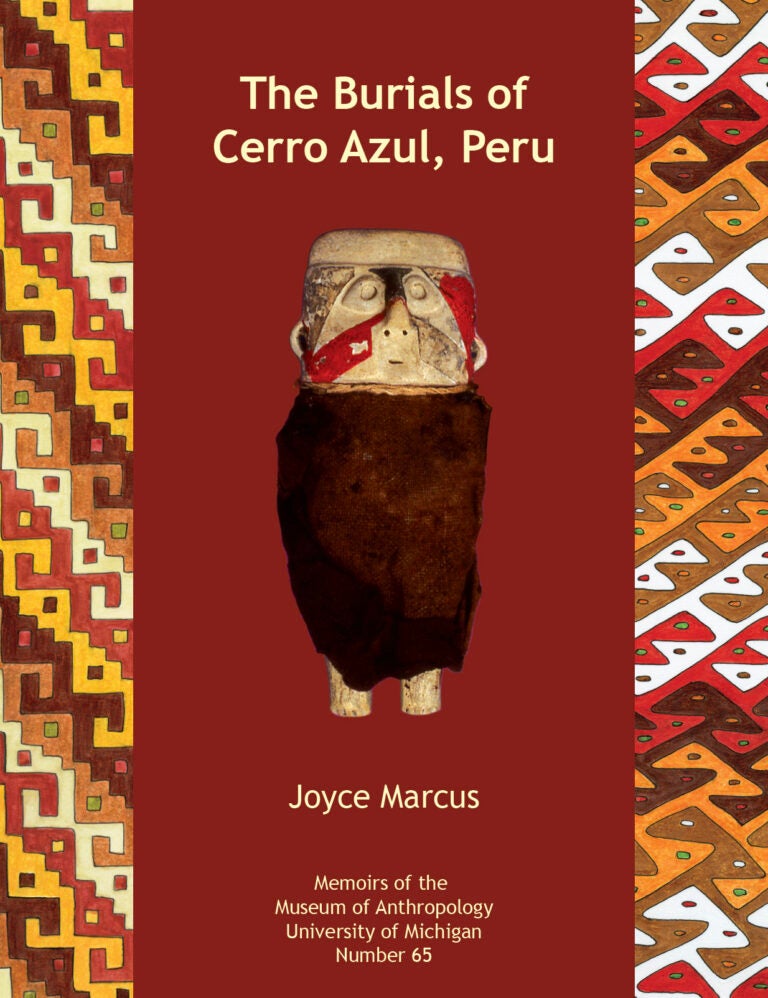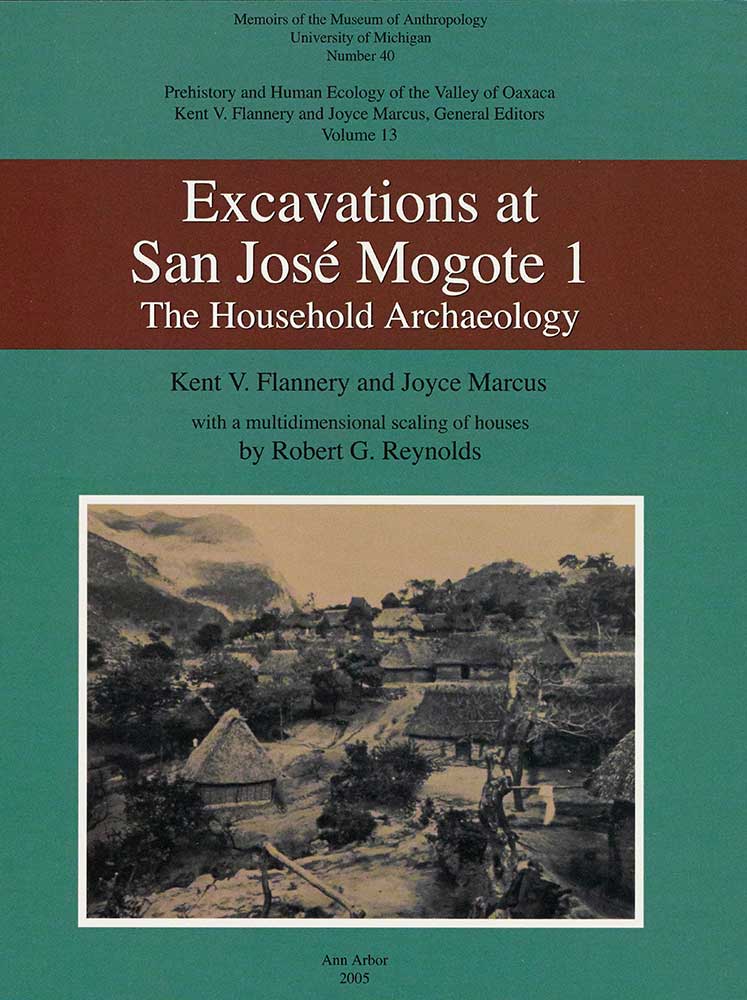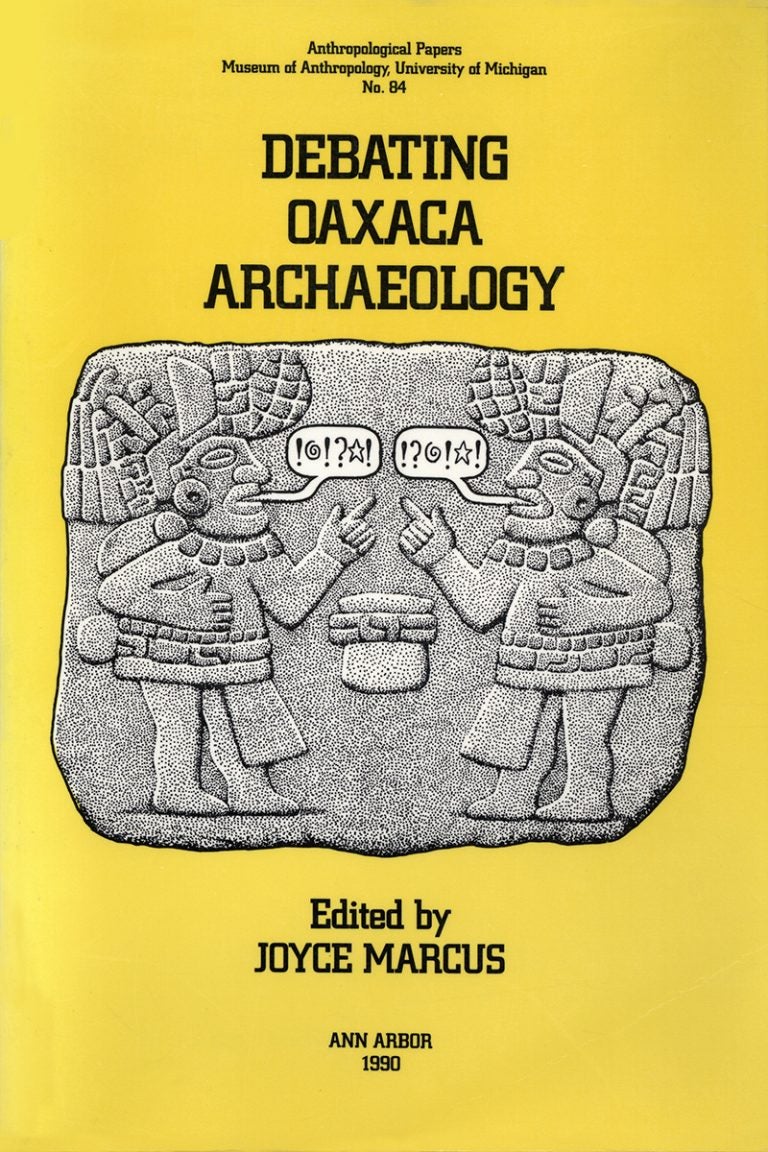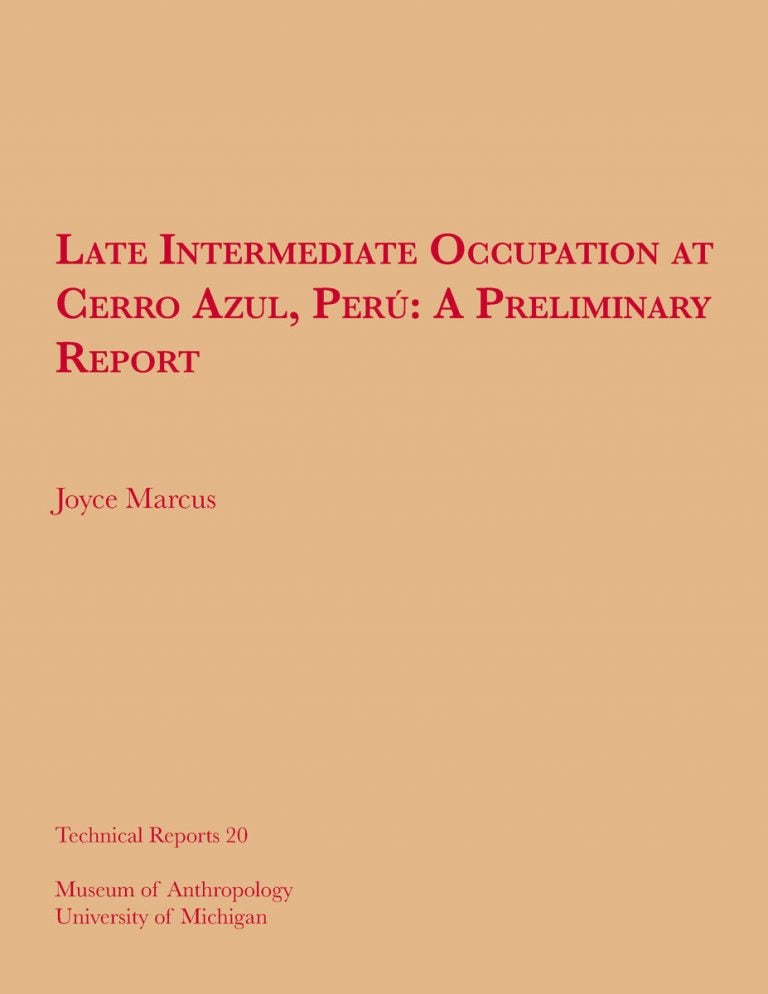Joyce Marcus directed excavations at the site of Cerro Azul in Peru’s Cañete Valley. In two previous volumes she reported on (1) a fish storage facility and the architecture, ceramics, and brewery in an elite residential compound, and (2) the inner workings of the coastal economic system.
In the course of her fieldwork, Marcus came across areas where Late Intermediate (AD 1000–1470) burials had been disturbed by illegal looting. She decided to salvage as much information from these looted burials as she could. Among her discoveries were that men at Cerro Azul were often buried with fishing nets, slings, and bolas, while women were frequently buried with belt looms, workbaskets, cotton and woolen yarn, barcoded spindles, and needlecases. This third Cerro Azul volume provides an inventory of all the burial data that Marcus was able to salvage.
Tag: Joyce Marcus
Coastal Ecosystems and Economic Strategies at Cerro Azul, Peru: The Study of a Late Intermediate Kingdom
Joyce Marcus
M 59
Cerro Azul, a pre-Inca fishing community in the Kingdom of Huarco, Peru, stood at the interface between a rich marine ecosystem and an irrigated coastal plain. Under the direction of its noble families, Cerro Azul dried millions of fish for shipment to inland communities, from which it received agricultural products and dried llama meat.
Excavations at San José Mogote 2: The Cognitive Archaeology
Kent V. Flannery and Joyce Marcus
M 58
San José Mogote is a 60-70 ha Formative site in the northern Valley of Oaxaca, Mexico, which was occupied for a thousand years before the city of Monte Albán was founded. Filling 432 pages and utilizing more than 400 photographs and line drawings, this book describes in detail more than 35 public buildings, including men’s houses, one-room temples, a performance platform, two-room state temples, a ballcourt, and two types of palaces.
Excavations at San José Mogote 1: The Household Archaeology
Kent V. Flannery and Joyce Marcus, with a multidimensional scaling of houses by Robert G. Reynolds
M 40
San José Mogote, an early village and chiefly center in Mexico’s Oaxaca Valley, was excavated over a fifteen-year period. This volume reports in detail on every Early and Middle Formative house recovered, including a complete inventory of artifacts, features, plants, animal bones, and craft raw materials by house, with extensive piece-plotting of items on house floors and dooryards.
Women’s Ritual in Formative Oaxaca: Figure-making, Divination, Death and the Ancestors
Joyce Marcus
M 33
This book covers divination, figurine-making, and women’s ritual treatment of ancestors in the Valley of Oaxaca, Mexico, from 1600 to 500 BC.
Early Formative Pottery of the Valley of Oaxaca
Kent V. Flannery and Joyce Marcus, with a technical ceramic analysis by William O. Payne
M 27
Using more than 300 illustrations, the authors present an encyclopedic analysis of the many types of pottery found in the Oaxaca Valley in the Early Formative period. From details of sherd profiles and tempers to discussions of the growth of various villages, this volume is an exhaustively thorough treatment of the topic and represents decades of archaeological fieldwork in the region.
Caciques and Their People: A Volume in Honor of Ronald Spores
Joyce Marcus and Judith Francis Zeitlin
AP 89
A volume of essays by Mesoamerican scholars on topics ranging from Zapotec archaeology to Cuicatec irrigation and Mixtec codices to Aztec ethnohistory. Authors use a direct historical approach, the comparative method, or develop models that contribute to ethnological and archaeological theory.
Debating Oaxaca Archaeology
Joyce Marcus
AP 84
The essays in this collection examine a variety of topics within Oaxacan archaeology, from settlement and land use to scale and complexity.
Late Intermediate Occupation at Cerro Azul, Perú: A Preliminary Report
Joyce Marcus
T 20
Cerro Azul was a late prehistoric fishing community on the south-central coast of Peru. It was one of several communities that belonged to the region of Huarco before falling to the Inca. This volume is the preliminary report of an interdisciplinary project carried out at the site from 1982 to 1986. The remains of many buildings exist on the site. During this project, crews excavated four of these, as well as middens and burials.









